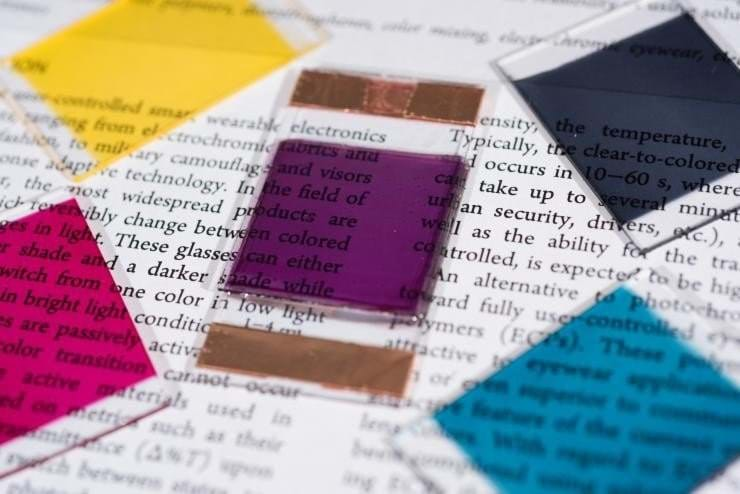Rear-view mirrors in modern cars can automatically dim when an inbuilt sensor detects bright light from a car behind. The sensor applies a small voltage to the mirror, which activates a colour-changing, or electrochromic, film on its surface. Such films are typically manufactured as solvent-based inks, limiting their manufacture to settings capable of handling volatile organic chemicals safely.
Now, researchers at Georgia Institute of Technology, US, have developed electrochromic film inks that are water-based, paving the way for safe, large-scale application by printing and spraying machinery.
Graduate researcher Brian Schmatz said: “Most research labs use chlorobenzene as a solvent. It’s pretty toxic. It’s carcinogenic, slightly volatile as well. So, it’s not something people want to work with at scale.”
The team’s aqueous films were made with conjugated polymers, which are electroactive organic molecules capable of shifting in colour when a small voltage causes them to lose electrons. The polymers are not typically soluble in water, but this was overcome using a phased approach.
Schmatz said: “We embed a chemical trigger within the polymer. It’s activated through a high pH water wash, and that transforms the organic-soluble polymer into a water-soluble polyelectrolyte. The reason we want to do all of this is so we can produce the polymer in an organic solvent, but then print the polymer from a water-based ink.”
The benefit of producing the polymer in an organic solvent, Schmatz explained, is to align the research with standard chemical industry practices.
To make sure that the film doesn't smear or run after printing, the added chemical trigger is then cleaved from the conjugated polymer using UV light. The resulting water-soluble chemical chain can be wiped or rinsed off, leaving a robust conjugated polymer film.
John Reynolds, a professor in Georgia Tech's schools of chemistry and biochemistry and material science and engineering, envisions that the work could lead to application of films onto more materials than glass or plastic.
“You could apply this to camouflage, for example, with the right textiles, and have a sensor connected to a battery, and have it switch the colours to match the changing lightness or darkness of a soldier’s surroundings,” he said.
ACS Central Science: http://doi.org/cb5c





